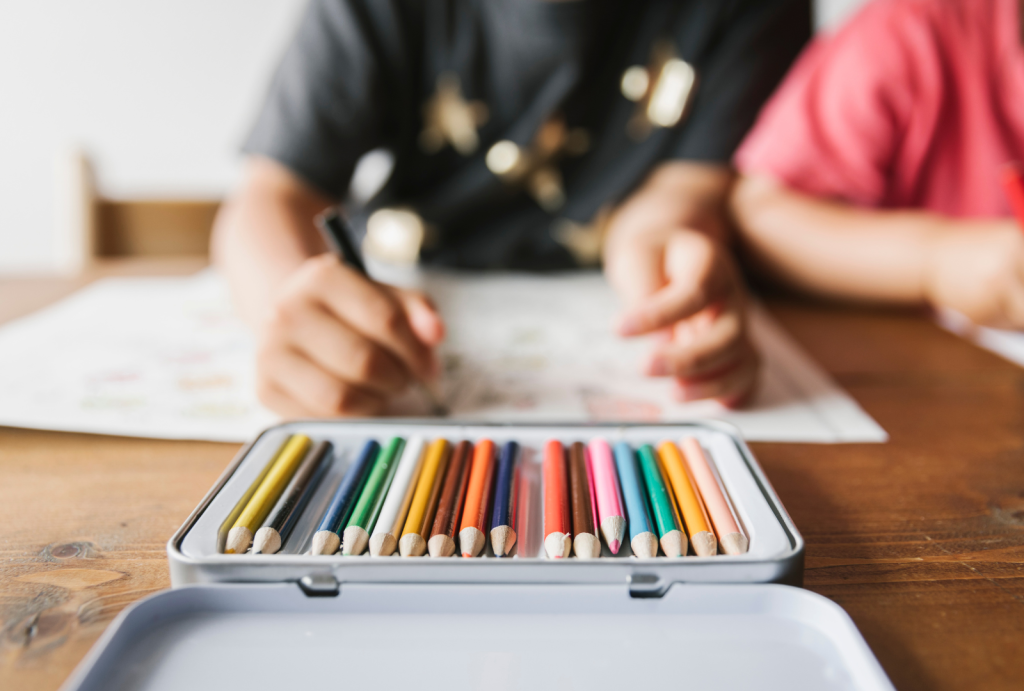Coloring books are a staple in many households, often introduced to children at a very young age. But why do parents give children coloring books when they are too young to know how to color? Even though toddlers and infants may not fully understand the concept of coloring, these books serve a greater purpose in their early development. Let’s explore why parents introduce coloring books to young children and how these books help build essential skills even before kids can color properly.
The Importance of Early Exposure to Coloring Books
Why do parents give children coloring books when they are too young to know how to color? While young children may not stay inside the lines or use coloring tools correctly, early exposure to coloring books provides numerous benefits that support a child’s physical, cognitive, and emotional growth. The benefits of giving coloring books to young children go far beyond artistic expression.
Early Development of Fine Motor Skills
Coloring books are an excellent tool for developing fine motor skills in young children. Although toddlers may not have the dexterity to control crayons or pencils, simply holding these tools helps them strengthen the muscles in their hands and fingers. These motor skills are essential for future tasks such as writing, drawing, and even tying shoelaces.
- Grasping and Holding: The act of holding crayons and attempting to scribble on paper helps toddlers develop their grasping and holding abilities.
- Muscle Memory: Over time, repeated attempts to color—even if they are not accurate—build muscle memory, improving hand control.
Cognitive Development and Learning Through Exploration
Introducing coloring books to children early on allows them to explore and experiment with colors, shapes, and textures. While they may not fully understand how to color, they are still absorbing information and making sense of their surroundings.
- Sensory Exploration: Young children use coloring books to engage their senses. The feel of the paper, the texture of crayons, and the visual stimulation from the colors are all part of their learning process.
- Cognitive Growth: As they explore these tools, toddlers begin to understand basic concepts such as cause and effect (e.g., the crayon leaves marks on paper when moved).
Boosting Creativity and Self-Expression
Even at a young age, children can begin to express themselves through coloring, even if it’s just random scribbles. Why do parents give children coloring books when they are too young to know how to color? The answer lies in fostering early creativity and imagination. Coloring allows young kids to explore their creative instincts, even before they understand the rules or boundaries of staying within lines.
- Imaginative Play: Coloring provides an outlet for imaginative play. Children can experiment with different colors and shapes without constraints.
- Emotional Expression: For toddlers who are just learning to communicate, coloring offers a way to express emotions visually.
Why Coloring Books Are Beneficial for Toddlers

Many parents give coloring books to their toddlers, even though they know the child won’t be coloring perfectly. This practice has several key benefits:
1. Developing Hand-Eye Coordination
Even though toddlers are too young to color within the lines, they begin developing hand-eye coordination through coloring. As they try to direct the crayon or marker on paper, they are training their brain to coordinate their movements with what they see.
- Cause and Effect: Toddlers learn that when they move their hand, marks appear on the paper. This basic understanding is an early lesson in cause and effect.
- Visual and Physical Connection: The more toddlers practice using coloring tools, the better they become at connecting what they see with their physical movements.
2. Familiarizing With Colors and Shapes
Coloring books provide toddlers with a great way to become familiar with different colors and shapes. While they may not fully understand how to color within the lines, they are still learning about color recognition and the basics of shapes.
- Color Identification: Introducing children to different colors helps them learn to identify and differentiate between various shades. This helps with cognitive development as they associate colors with objects in their environment.
3. Building Confidence and Independence
When toddlers use coloring books, they begin to develop a sense of independence. Even though their coloring may seem messy to adults, the experience gives them confidence as they learn how to use crayons and explore the world of color on their own terms.
- Self-Confidence: Completing a page—no matter how it looks—gives children a sense of accomplishment and builds self-esteem.
- Autonomy: Coloring allows young children to make choices, like which colors to use or where to scribble, giving them a sense of autonomy.
Why Do Parents Give Coloring Books to Toddlers?

Parents understand that toddlers may not know how to color properly, but giving them coloring books helps them grow in unexpected ways. Why do parents give children coloring books when they are too young to know how to color? Simply put, these books are a fun and engaging tool that supports multiple aspects of early development.
1. Fun and Enjoyment
Coloring is a fun and engaging activity for toddlers, even if they don’t follow the traditional rules of coloring. Parents give toddlers coloring books because it provides them with a fun way to stay engaged while exploring their creativity.
2. Early Learning Opportunities
Coloring books introduce young children to the world of colors, shapes, and forms in a simple, accessible way. Through coloring, children start learning basic concepts that will support their future education.
3. Bonding Time
Coloring is also a great bonding activity for parents and children. Parents can sit with their toddlers and color alongside them, teaching them how to hold a crayon or name different colors. This shared activity fosters connection and interaction between parent and child.
Conclusion
So, why do parents give children coloring books when they are too young to know how to color? The answer lies in the developmental benefits these books offer. Even though young children may not color within the lines or follow traditional coloring techniques, coloring books provide an invaluable opportunity to develop fine motor skills, hand-eye coordination, creativity, and cognitive growth. Giving coloring books to toddlers is a simple yet effective way to nurture early childhood development while offering a fun and engaging activity.
FAQs
Why do parents give children coloring books when they can’t color properly yet?
Parents give coloring books to toddlers to help them develop fine motor skills, hand-eye coordination, and creativity, even before they can color within the lines.
What are the benefits of coloring books for toddlers?
Coloring books help toddlers build fine motor skills, familiarize them with colors and shapes, and boost their confidence as they explore their creativity.
How do coloring books support early childhood development?
Coloring books support early development by helping children improve hand-eye coordination, build muscle memory, and encourage cognitive growth through exploration.
Can toddlers benefit from coloring even if they don’t color inside the lines?
Yes! Toddlers benefit from coloring regardless of whether they stay inside the lines. The act of coloring itself helps develop essential skills and fosters creativity.
